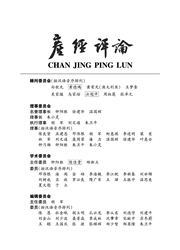

 中文摘要:
中文摘要:
煤矿采空对矿区土地损毁过程复杂,损毁程度影响因素多样。考虑各煤矿面积和规模的差异性,选取受损耕地比值(Q_1)、地表变形比值(Q_2)、水源破坏比值(Q_3)、煤炭开采深厚比(Q_4)、煤层倾角(Q_5)5个聚类指标,在有机结合灰色系统理论与煤炭科学的基础上,考虑重庆市采煤特点对聚类模型进行优化,给出评价中模型的计算方法,并以重庆市8个典型煤矿为例对其受损程度进行评价。结果表明,2个煤矿属于轻度损毁(Ⅱ),6个煤矿属于极严重损毁(Ⅴ)。同时,根据粗糙集评价方法分析各煤矿的恢复难易程度,得出在评价结果Ⅴ级中石壕煤矿最难恢复,其次为南井、北井和松藻煤矿、曹家沟煤矿、福田煤矿;在评价结果Ⅱ级中韦家沟煤矿恢复治理难于田家煤矿。实践证明,评价结果与实际情况相符,此方法用于矿区损毁程度评价和恢复难易程度评价是可行、有效的。
 英文摘要:
英文摘要:
The damage process of the land in mining area caused by coal mining is complicated and the affecting factors of damage degree are various. Considering the difference of the area and scale of each coal mine,it selected 5 cluster indexes of the ratio of damaged farmland(Q_1),surface deformation ratio(Q_2),the ratio of water source damage(Q_3),the ratio of coal mining depth(Q_4) and coal seam dip angle(Q_5),optimized clustering model through considering the characteristics of coal mining in Chongqing,gave out a calculation method of evaluation model based on grey system theory and coal science and evaluated the damage degree by taking 8 typical coal mines in Chongqing as an example. The outcomes show that 2 coal mines belong to slight damage(Ⅱ) and 6 coal mines belong to extremely serious damage(Ⅴ). In the meanwhile,it analyzed the difficulty level of restoration of each coal mine based on rough set evaluation method and obtained the following results: among the evaluation results of grade Ⅴ,Shihao Coal Mine is the most difficult to restore,then followed by Nanjing,Beijing,Songzao,Caojiagou and Futian coal mines. Among the evaluation results of grade Ⅱ,the restoration of Weijiagou Coal Mine is more difficult than that of Tianjia Coal Mine. The practice has proved that the evaluation results are in line with the actual situation and it is feasible and effective to evaluate the degree of damage and the difficulty level of restoration.
 同期刊论文项目
同期刊论文项目
 同项目期刊论文
同项目期刊论文
 期刊信息
期刊信息
